Shrines are sacred places that house – enshrine – one or more Shinto deities – gods or kami. It is estimated that there are about 80,000 shrines located throughout Japan, of which approximately 1,450 are to be found in Tokyo. And Tokyo’s Shinto shrines make for great sightseeing spots! Japanese people visit Shinto shrines to pay respect to the Shinto deities or to pray for good fortune. Shintoism is Japan’s indigenous religion, with a long history and a wide range of rituals. Shinto rituals and beliefs are deeply rooted in the Japanese culture. Together with Buddhism, Shintoism is Japan’s main religion, and the two are intertwined and connected strongly.
There are different type of Shinto shrines that house different gods and consequently are visited for different reasons such as good luck for exams, wishing for a healthy life, or loving relationships. Shrines are also visited during special events such as Hatsumode during the New Year’s holidays, setsubun, shichigosan and other (Japanese) festivals. It is also custom that newborns are brought to a shrine within a few weeks after birth, and many couples hold their wedding ceremonies there.
Tokyo Jissha – 東京十社
Tokyo Jissha refers to ten shrines in Tokyo metropolitan area. They belong to the 12 shrines that were selected by Emperor Meiji after the Meiji restoration to bring about property and continued growth of the capital city. They are not the only shrines, nor the most beautiful of Tokyo. Some people also say the shrines were chosen because of their strategic location. Together they form a barrier of protection of inner Tokyo area.
Many people make a pilgrimage and try visiting the 10 different shrines, carrying a stamp book – goshuincho – and collect stamps – goshuin – at each shrine to commemorate the journey. You can try to tackle all shrines in a day, it is not that hard because the shrines are good accessible by public transportation. But it won’t leave you much time for sightseeing, we recommend you take your time and plan spread out the visits over a few days and explore the area around the shrines too. These are the 10 shrines of the Tokyo Jissha:
1. Nezu Shrine – 根津神社
This shrine is one of Japan’s oldest shrines, its’ construction dates back to the early 1700s, and is marked as an ‘Important Cultural Property’. The shrine is very famous for its Rhododendron Festival, with around 50 varieties blooming from late April to May and the rows or torii gates that resemble the vermillions torii gates of Kyoto’s Fushimi Inari Shrine. The Nezu Shrine is also known as the shrine of Soseki Natsume, a famous novelist, and Ogai Mori, a famous author and doctor in the Meiji Period.
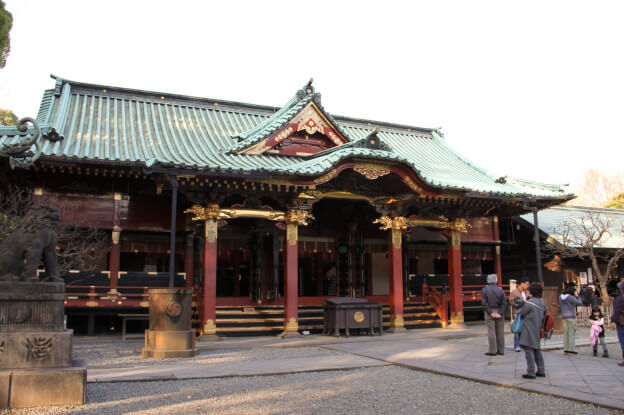
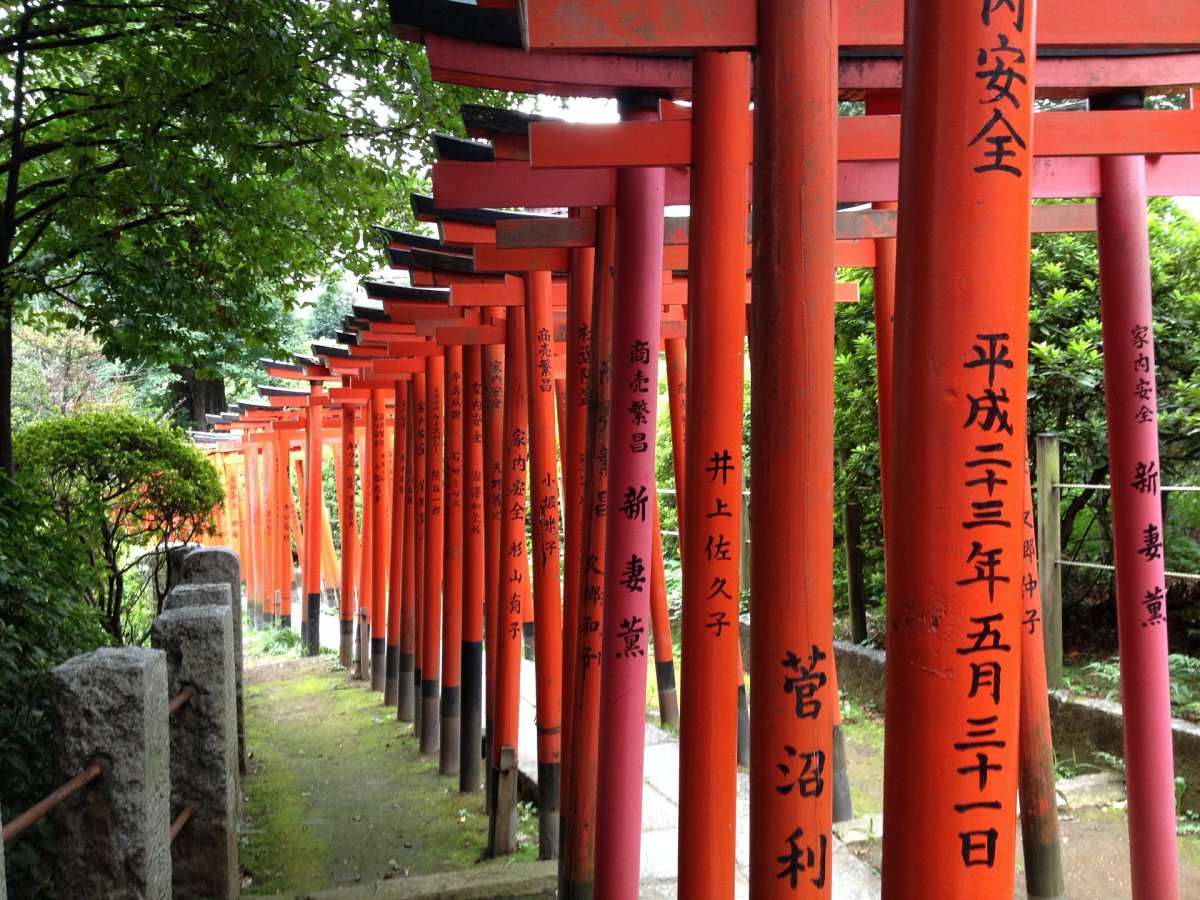
5 minute walk from Nezu Station Todai-mae Station
2. Kanda Shrine – 神田明神
In this shrine general Masakado Taira, who lived about a thousand years ago, is honoured. The Kanda shrine is dedicated to two gods of luck: Daikokuten and Ebisu, gods of commerce, prosperity and wealth. For this reason many businesspeople go here, especially on the start of the new year for Hatsumode. It is also a popular spot for anime fans because of the scene of a popular anime “Love Live”.
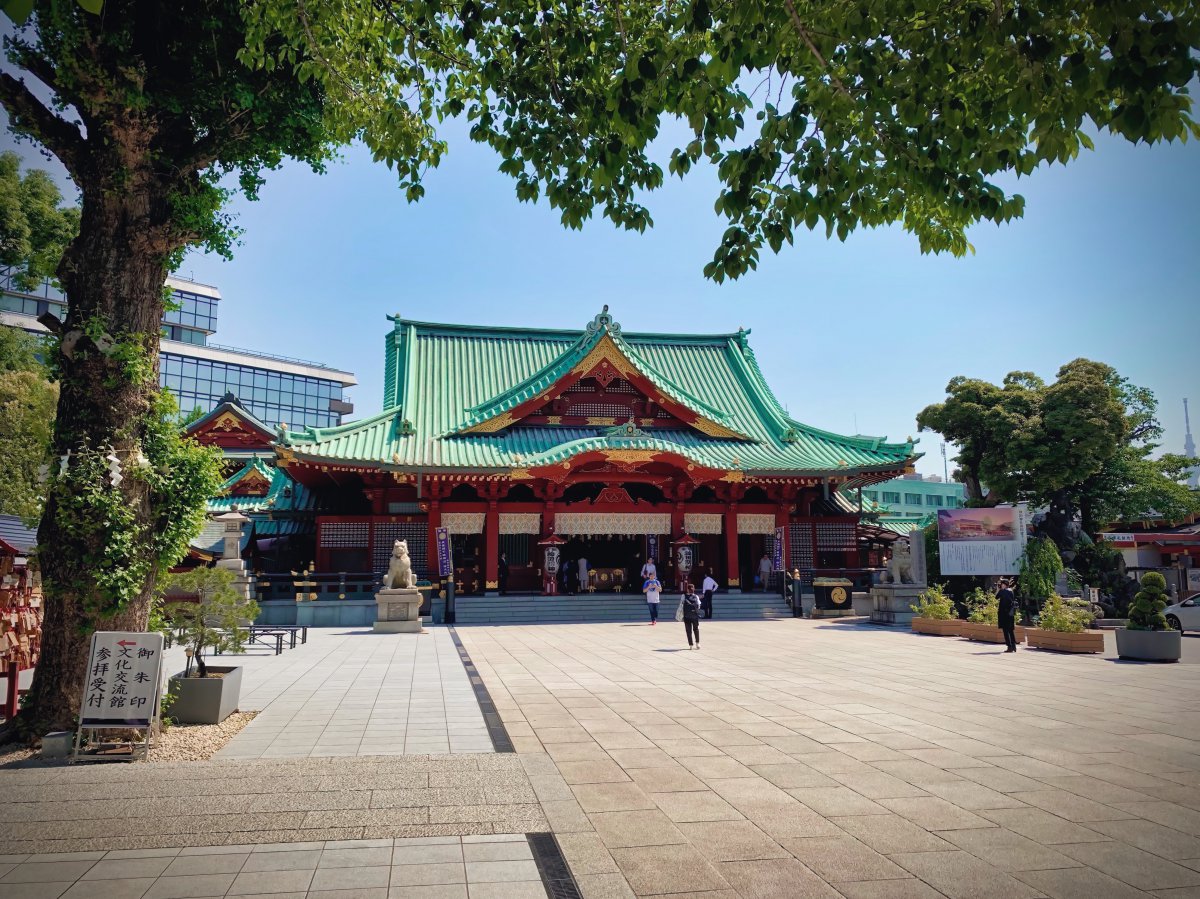
5-10 min walk from Ochanomizu Station and Akihabara station
3. Kameido Shrine – 亀戸天神社
Because this shrine is dedicated to Michizane Sugawara, a god of study, many students come here to wish for good luck in their (entrance) exams. During spring season this is also a beautiful spot to watch the wisteria and cherry blossom in their full colours.
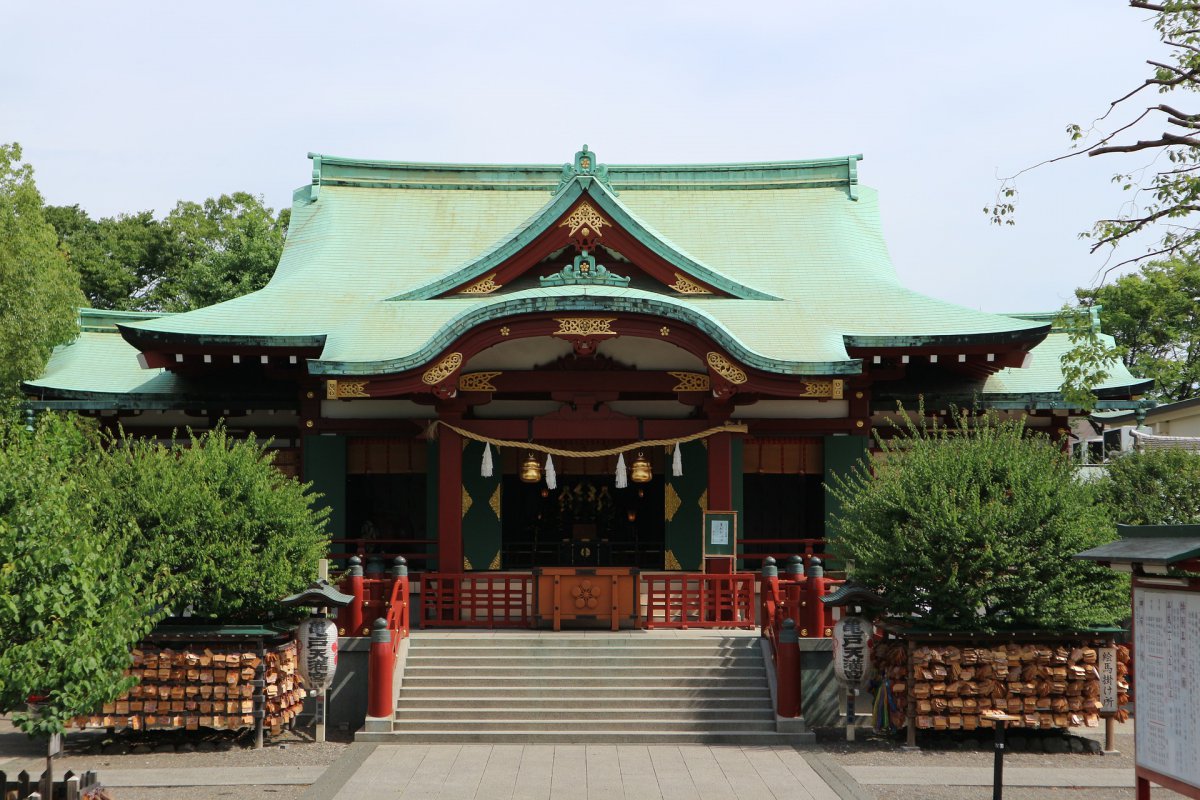
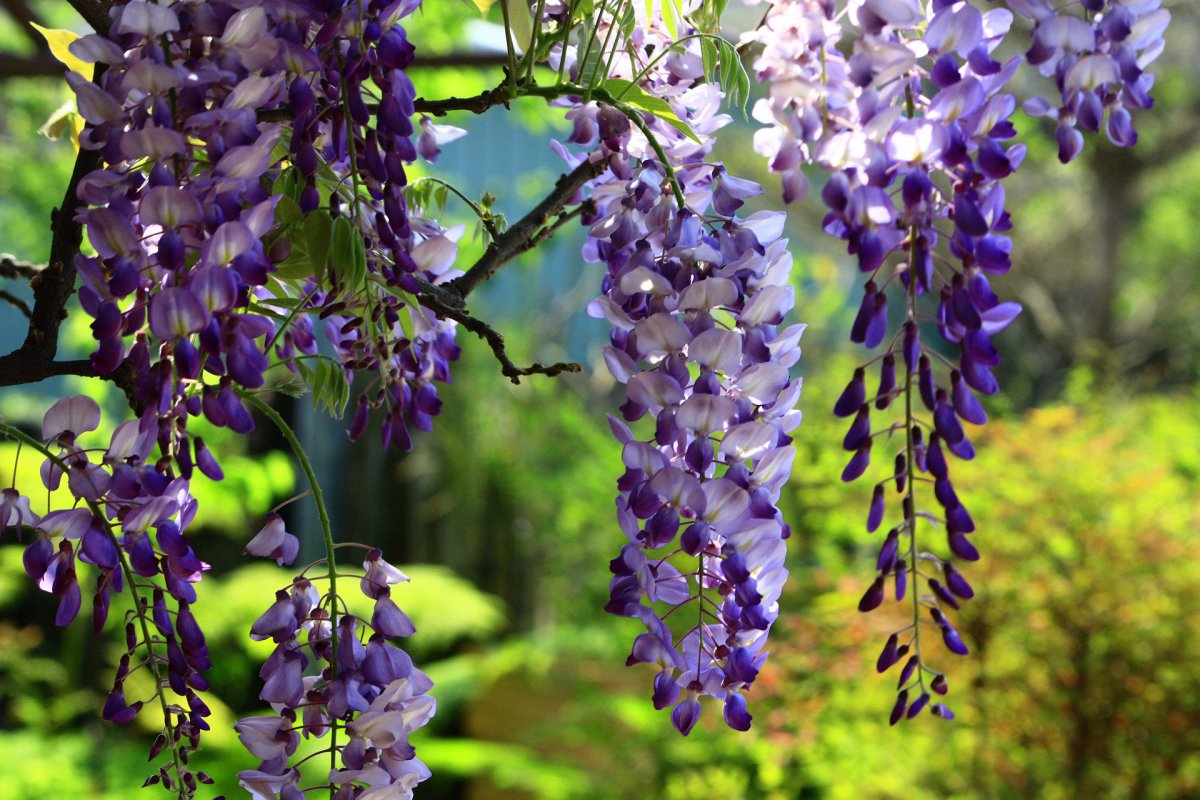
10 min walk from Kinshicho Station or Kameido Station.
4. Ouji Shrine – 王子神社
This shrine is popular amongst newly-weds and pregnant woman, because it is said to bring good luck, scare away evil spirits and will help you raise your child. The 600-year-old big ginkgo tree prominent visible, is one of the Tokyo designated cultural property.
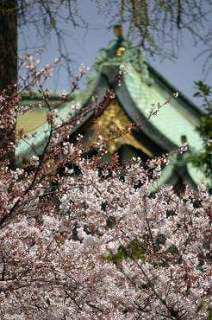
3 minute walk from Oji Station.
5. Hie Shrine – 日枝神社
This is a popular spot for traditional Japanese ceremonies including weddings, miyamairi and shichi-go-san and it is also the starting point for one of the three biggest festivals in Japan; Sanno festival. People visit this shrine to wish for a happy married life, well-being of kids and easy childbirth.
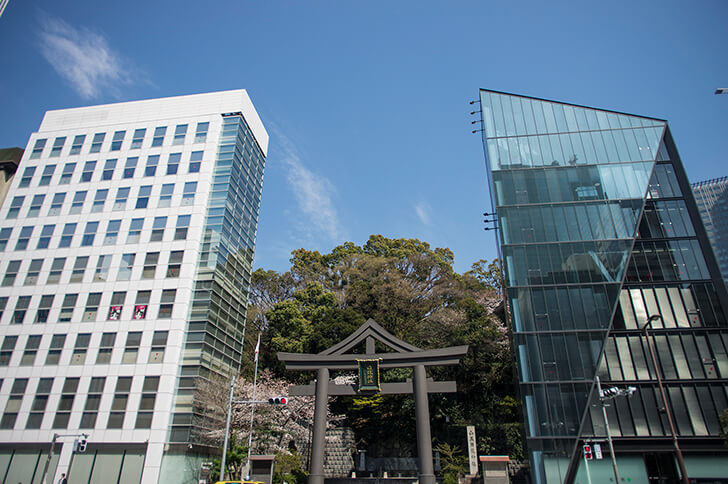
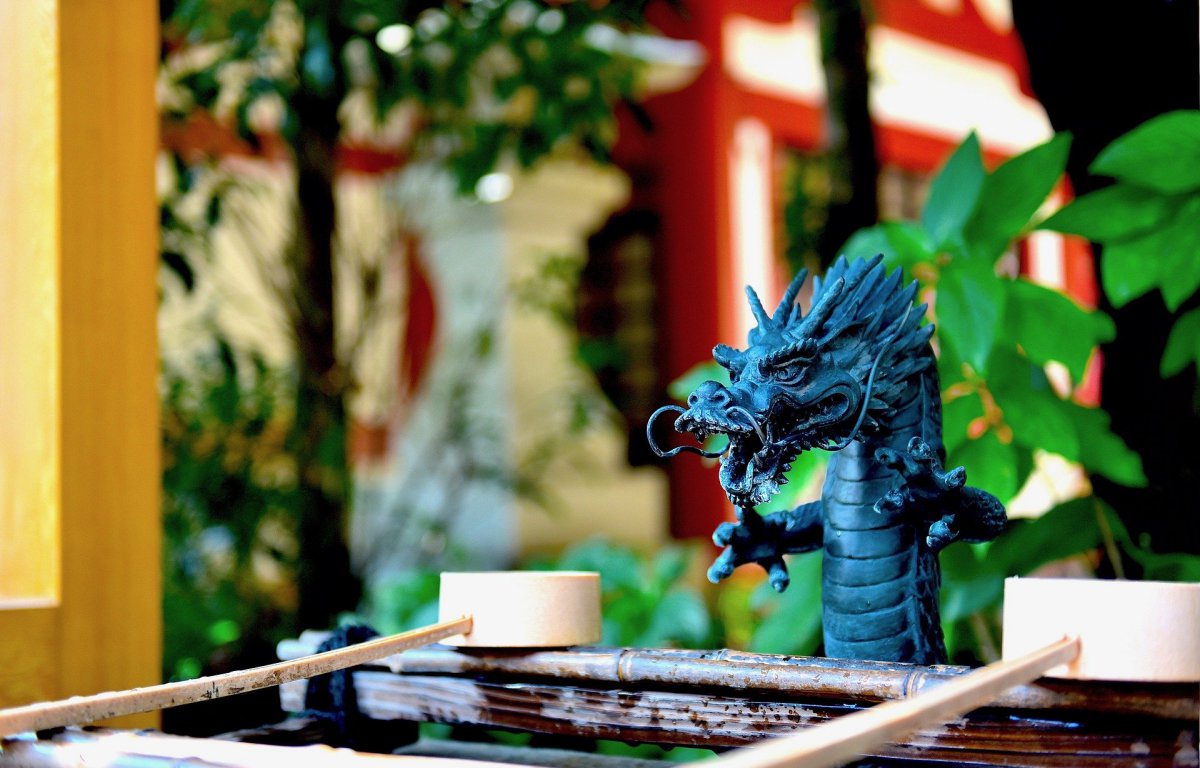
5 minute walk from Akasaka Station.
6. Tomioka Hachiman Shrine – 富岡八幡宮
Considered to be the birthplace of sumo, this shrines hosts ceremonies whenever a sumo wrestler achieves the rank of highest rank of yokozuna. It is also famous for the biggest mikoshi (portable shrine) in Japan. In the summer, this shrine holds one of the 3 biggest summer festivals in Tokyo.
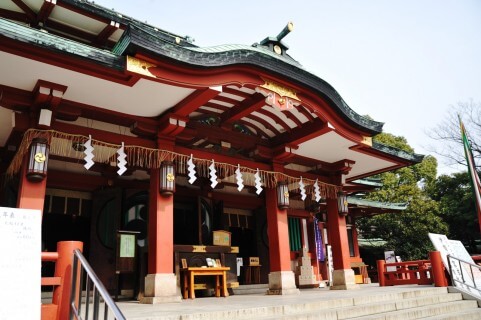
3 minute walk from Monzen-Nakamachi St.
7. Shiba-daijingū Shrine – 芝大神宮
This shrine is also known as Tokyo no Oisesama (Ise Grand Shrine) and the deities that work to connect all living creatures are enshrined here. Many visit to ask for prosperous relations, both personal as well as business. The shrine is located in a business district, so many workers visit here to ask for success in business. When time permits we recommend you also visit the nearby Zojoji temple, a Buddhist temple famous for the rows of Jizo statues.
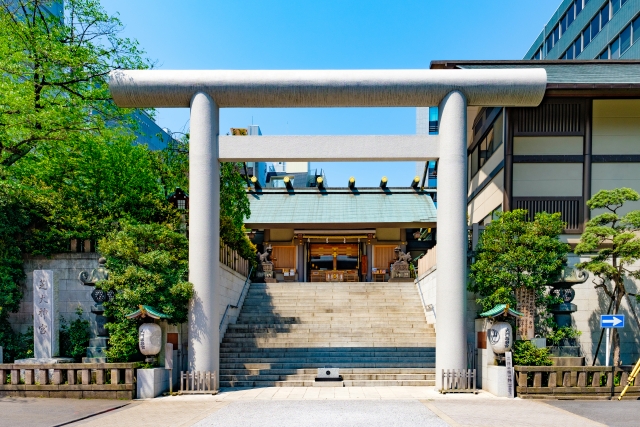
2 minute walk from Daimon Station
8. Hakusan Shrine – 白山神社
This small family run shrine is famous for its Ajisai (hydrangea) Festival in June. It enshrines Kikurihime Okami, the match-making deity.
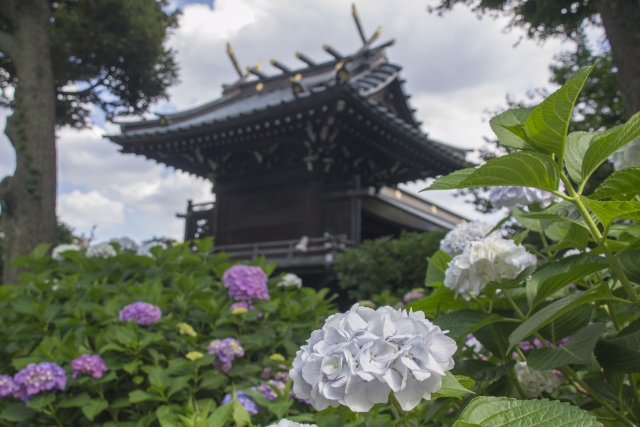
2 minute walk from Hakusan Station.
9. Shinagawa Shrine – 品川神社
Looking for luck? Visit Shinagawa Shrine, the home of Daikokuten, one of the deities of good luck. The shrine has many unique features such as a climbable 15 meter-tall fujizuka, a mound imitating Mount Fuji. Back in the days fujizuka were made for people who did not have the means or the physical condition to climb Mount Fuji. It is also said when you wash your money here, you will receive 10 times the amount.
2 minute walk from Shim-Baba Station.
10. Akasaka Hikawa Shrine – 赤坂氷川神社
This shrine is said to bring romance to you, providing peace and prosperity in your home, successful business relations and finding your match. To prove its good fortune; this shrines has survived earthquakes and air raids or WOII. Being located in the heart of Roppongi, you will be surprised. This shrine is truly a haven of peace.
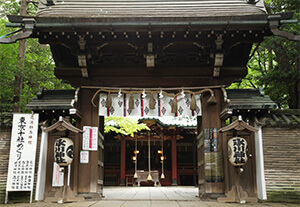
5 min walk from Roppongi Station.
Japan Wonder Travel Tours
When you are interested in learning more about the Japanese culture or Shintoism, we recommend you join a tour with a local guide. We operate various kinds of exciting tours ranging from food and drink tours to private walking tours. We happily develop a customised day-trip for you, to make most out of your visit to Tokyo. Some of our standardized tours are:
- Kamakura Private Walking Tour
- Tokyo 1-Day Highlights Private Walking Tours
- Kyoto Private Full Day Walking Tour
- Find more tours in Japan
How about going on a small pilgrimage and visit these 10 shrines when you are in Tokyo and collecting your stamps? It is a great way to see more of Tokyo other than the main tourist spots and learn more about the shrines. How about giving it a shot if you have plenty of time in Tokyo?
Follow us on Instagram, Facebook or Twitter for more travel inspiration. Or tag us to get featured!
Happy travelling!
Other blogs that you might like
This post may contain some affiliate links. When you click through and make a purchase we may receive some commission, at no extra costs to you



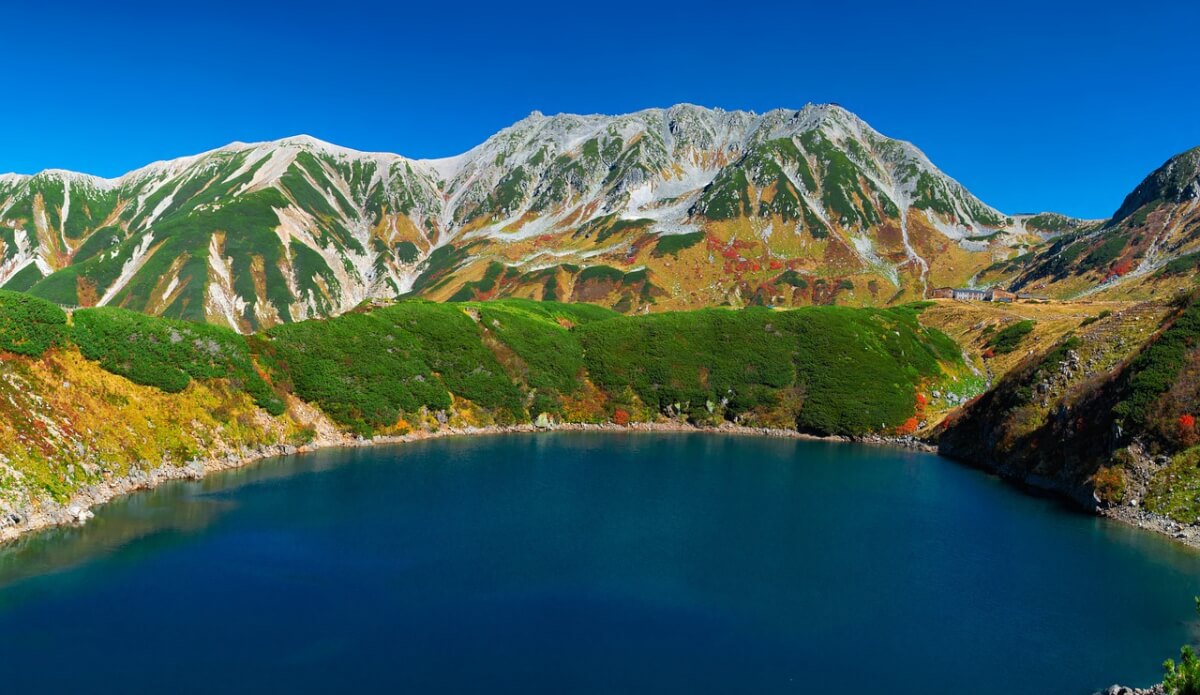
Comments
The list missed Shiba Daijingu
1. Nezu Shrine (根津神社)
2. Kanda Shrine (神田明神)
3. Kameido Shrine (亀戸天神社)
4. Hakusan Shrine(白山神社)
5. Ouji Shrine (王子神社)
6. Hie Shrine (日枝神社)
7. Shinagawa Shrine (品川神社)
8. Tomioka Hachiman Shrine (富岡八幡宮)
9. Hikawa Shrine (氷川神社)
10. Shiba Daijingu Shrine (芝大神宮)